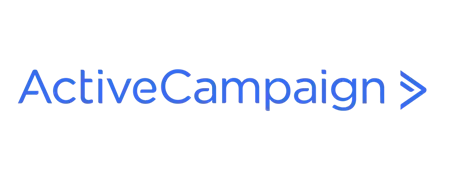Challenges are structured, time-limited programs that provide participants with specific goals or activities designed to engage and motivate them while showcasing your coaching expertise.
Offering free or low-cost challenges engages potential clients and showcases your coaching style. For example, a 7-day running challenge that includes daily mileage or time goals and motivational tips can demonstrate your expertise while helping participants experience improvements in their training. A cycling distance challenge or a triathlon-specific series of swim, bike, and run mini-events can also provide prospective clients with a taste of structured training, making it more likely they'll be interested in full coaching services.
These challenges can be especially effective when tied to upcoming local events, as they provide athletes with a direct pathway to prepare for races under your guidance.
Challenges are a fantastic way to bring potential clients into your ecosystem while showcasing your coaching approach. Think about how these challenges can tie directly into the goals of your ideal clients. For example, a short-term running challenge that builds mileage and confidence incrementally can appeal to beginners, while an advanced cycling challenge targeting higher intensity levels may resonate with seasoned athletes.
The key is to make the challenge relevant and achievable, creating an engaging experience that leaves participants ready for the next stage (your coaching services). Additionally, keep in mind that challenges also serve as a gateway into your coaching services, so the structure should naturally lead participants to explore what you offer in a more comprehensive capacity.
Continue reading or listen to the audio version on the podcast or watch the video version on Youtube. Both also embedded below.
Steps to Running a Successful Challenge
Here is a rough guide on what to think about when planning, pricing, promoting and facilitating a challenge.
1. Designing the Challenge
Create a challenge that aligns with your own skills, knowledge and expertise and map that to a specific type of person with specific goals or problems they need solving
- Identify the goals and needs of your ideal participants.
- Set clear, achievable, and measurable objectives.
- Develop engaging daily activities or milestones.
- Create a structured plan for participants to follow. Make it simple, effective and technically easy to access and follow
2. Pricing the Challenge
Have realistic expectations. It's unlikely the first challenges you run will be particularly profitable. Early challenges will work better as demand generation and audience building so prioritize building trust and authority. You can upsell participants to higher priced services after the challenge, and/or build momentum and plan to become more profitable in subsequent challenges in the future. Some points to consider;
- Decide between offering the challenge for free, a low-cost entry point, or a tiered pricing structure.
- Consider your audience’s willingness to pay and perceived value.
- Consider how large and engaged your current audience is when determining pricing.
3. Promoting the Challenge
- Use social media, email marketing, and your existing network to spread the word.
- Leverage Facebook Groups and community forums to reach interested participants.
- Encourage early sign-ups with incentives or bonuses.
4. Managing the Challenge
- Clearly communicate daily activities and motivational tips.
- Regularly engage with participants, answer questions, and provide feedback.
- Foster a sense of community and encourage participants to interact.
5. Upselling to Premium Services
- Clearly outline the benefits of your premium coaching services.
- Offer special deals or incentives for participants who complete the challenge.
- Provide personalized follow-up to help participants transition smoothly to your more comprehensive coaching programs.
Key Takeaways
- Challenges are a great way to engage potential clients and showcase your coaching style.
- Ensure the challenge aligns with the specific goals and needs of your ideal audience.
- Use challenges to provide a structured and achievable experience that builds confidence in participants.
- Tie challenges to local events or milestones to increase relevance and participation.
- Design challenges to naturally guide participants toward exploring your full coaching services.
Next Steps
- Organize a challenge with daily goals and motivational content.
- Encourage participants to share their progress on social media to increase visibility and attract more participants.
- When possible, tie challenges to upcoming local events to provide a pathway for participants to prepare under your guidance.
Tools
- Facebook Groups
- Email marketing platform
- A platform like Training Tilt for managing groups and sharing structured workouts or training plans digitally
Related Blog Articles
Value Ladder Examples and Setup provides insights into how offering free challenges can be a part of your value ladder strategy, helping to introduce potential clients to your coaching services.
How Cohort-Based Group Coaching Features Work explains how to create structured group programs, which can be an effective way to run challenges that engage participants and encourage them to stay committed to their goals. Training Tilt has specific features to efficiently manage group cohort training.
More in this series
- Finding Coaching Clients Through Partnerships
- Social Proof and Testimonials
- Content Marketing
- Challenges (This post)
- Free Consultations ... Coming Soon
- Email Marketing .. Coming soon
- Webinars and Q and A Sessions ... Coming Soon
- Community Networking ... Coming Soon
- Paid Advertising ... Coming Soon
/attracting-coaching-clients-using-social-proof
Take our Free "Authentic" Marketing Course for Coaches
Designed for endurance sport coaches. Marketing doesn't need to be pushy. The best marketing simply creates a win-win relationship between you and your customers. Take the simple 6 part course to learn more.













